What the Ocean Course at Kiawah Island, site of this month’s PGA Championship teaches us about overcoming challenging layouts.
All golf courses are difficult for those playing poorly. Others have difficulty bred into them. When the professionals take on the Ocean Course at Kiawah Island for the PGA Championship from May 20-23, they will be playing the most difficult course in recent Major-championship history. Only six courses in the United States have a higher combined USGA Course and Slope rating than the Ocean Course’s 79.1 and 155 off tees measuring more than 7,200 metres, numbers that seem almost surreal – but they are real. Only one of those six courses, Oak Tree National, has ever been the site of a men’s Major (the 1988 PGA Championship).
As daunting as those figures are, viewers shouldn’t necessarily expect a bloodletting at Kiawah. A Course Rating reflects the predicted score of a scratch golfer playing his or her best off that set of tees, but not even the tour pros will be asked to take on the full weight of the design. In fact, it’s unlikely the course will ever play to its maximum distance. The switching, unpredictable east-west coastal winds that mirror the east-west routing of the holes means those 7,200 metres (7,900 yards) are needed for flexibility – some days half the holes could face stiff headwinds, and the next, with the wind coming from a different direction, they might play 50 or even 100 metres shorter. (In May, with cooler temperatures, a confusing north wind cutting across the line of play is also possible.) Kerry Haigh, chief championships officer for the PGA of America, and his team will try to anticipate the wind direction and adjust tees forward or back accordingly. Guessing wrong could result in long days and grumbling competitors.
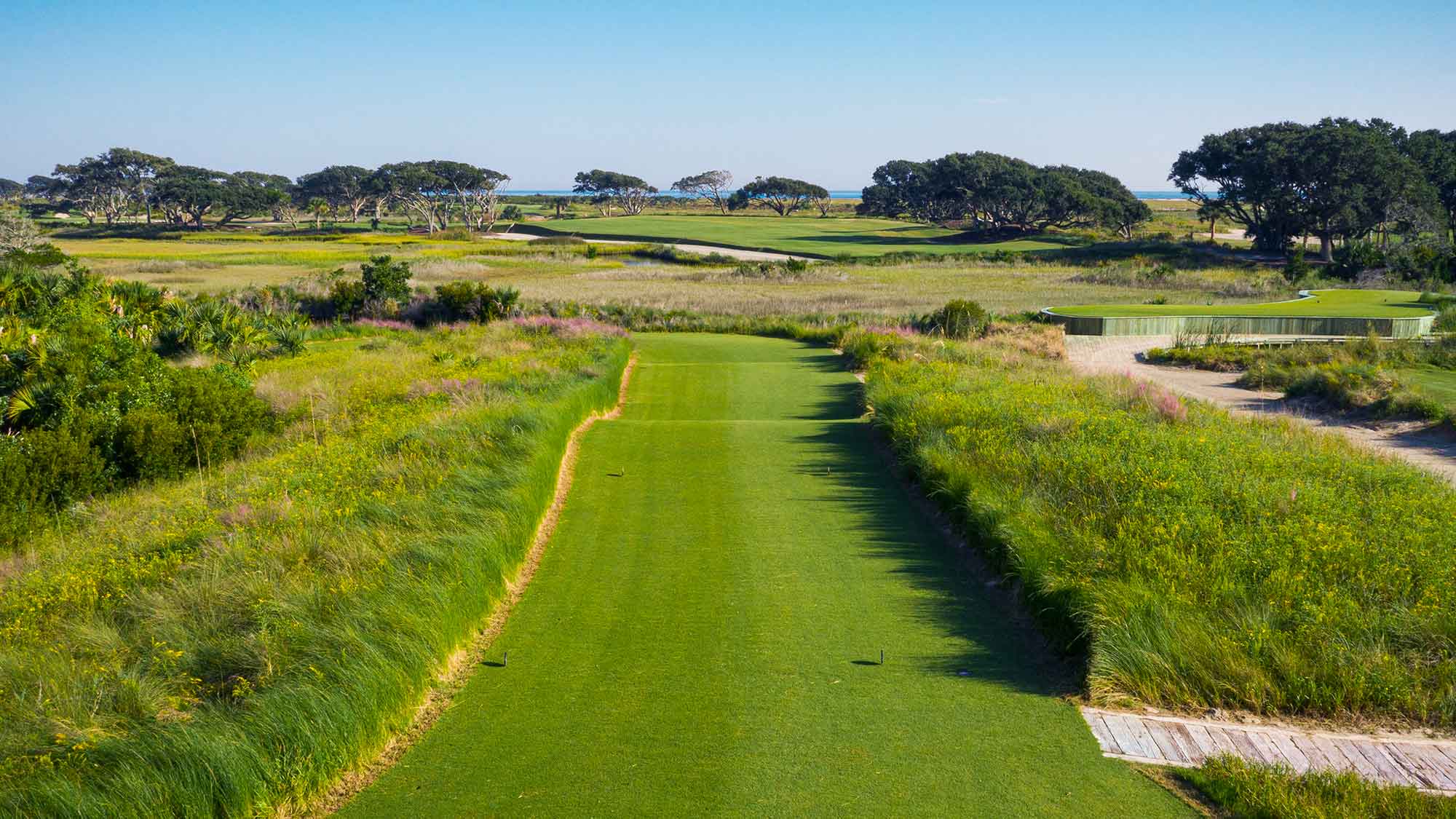
Wind and length might be the sternest challenges, but they are not insurmountable – the professionals have the shots and length to overcome or at least mitigate them. Rory McIlroy made the Ocean Course look almost easy during the 2012 PGA Championship, shooting a 13-under-par 275, eight shots clear of the field. But most golfers don’t have the shots, and these same factors – plus high-handicap land mines like waste bunkers, gnarly sea grasses bordering fairways and a battery of other defences Pete Dye built into the course as he rushed to complete it in time for the 1991 Ryder Cup matches – can turn casual rounds at the Ocean Course into interminable search-and-rescue missions.
The Ocean Course’s reputation for inducing cruel outcomes was forged on that Ryder Cup battlefield as Dye’s interpretation of Low Country links became as much of a storyline as the back-and-forth tension of the matches, supplying equal doses of physical and psychological trauma. Incidentally, that’s exactly the kind of experience many resort guests want. Brian Gerard, director of golf at Kiawah Island Golf Resort for the past 17 years, who previously served as head professional at the Ocean Course for 11 years, saw it daily.
“People didn’t care what their scorecard read – they were there to play one of the most challenging, difficult golf courses in the country, one that had hosted a Ryder Cup,” he says. “They would come in and say it was a hard golf course, but they didn’t complain about it.”
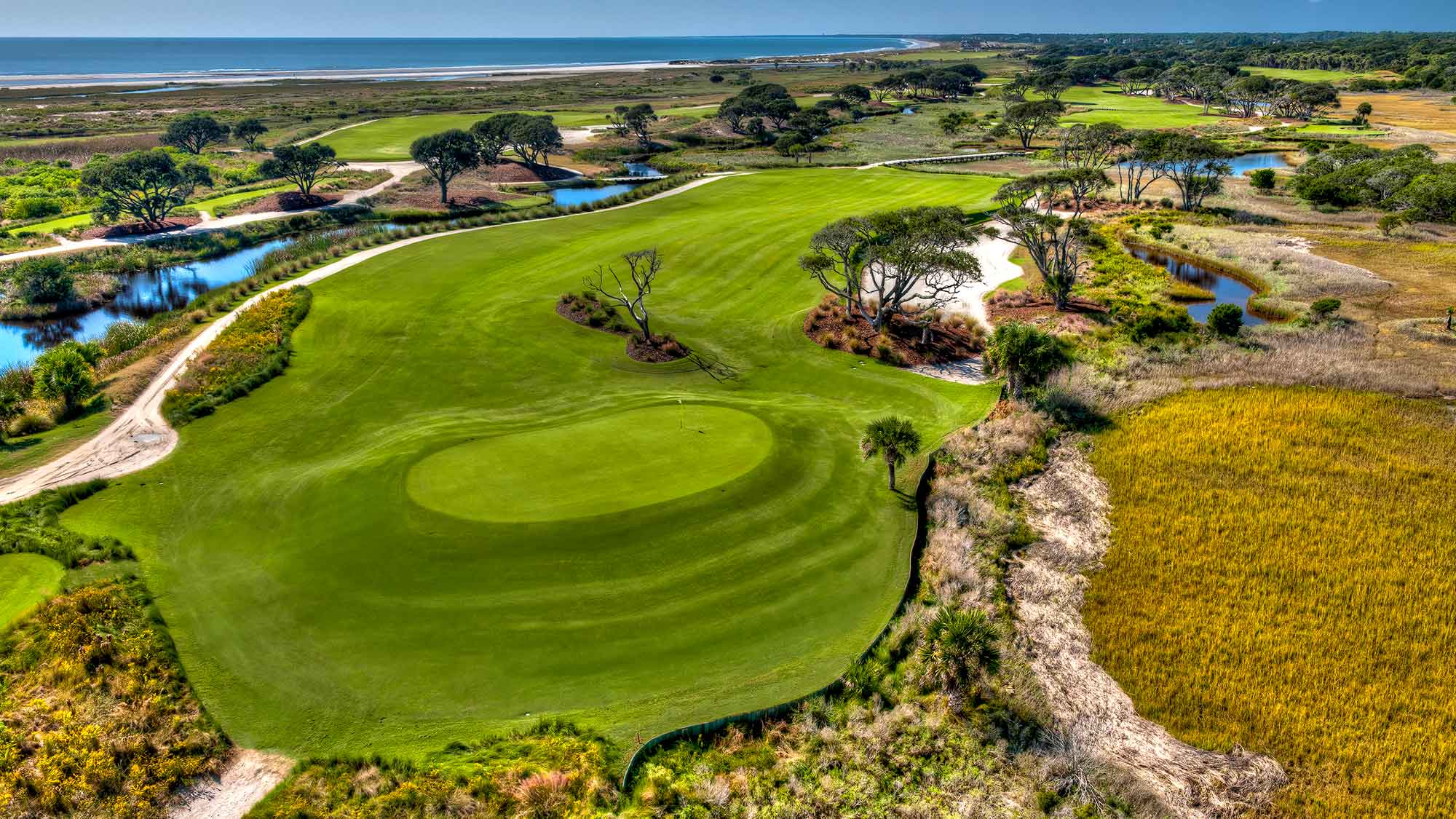
Attempting to overcome extreme challenges is integral to the game’s allure. But playing challenging courses should not mean extreme scores must be surrendered. The ways the Ocean Course extracts strokes – the coastal elements, the combination of sand, grass and marsh, Dye’s strange alchemy – might be particular to this design and location, but they can also be examined as an avatar for all difficult courses. How the professionals will attack it during the PGA Championship is instructive for how less skilled golfers can strategise their games through similar if less severe networks of turmoil.
Each nine at the Ocean Course comprises holes that form out-and-back routings wedged between interior salt marshes and the Atlantic dunes. The tee shot on the par-5 second plays over a broad section of the inland marsh to a fairway that runs away from the player from right to left. For the pros, the decision is how far left to aim to leave a short second shot that isn’t blocked by a cluster of live oaks through the fairway. Bogey players might be satisfied just to clear the marsh by hitting to a broad, visible landing area out to the right, but from here the second shot becomes longer and more complicated because of the tapering landing zone, a narrow wetland passage bisecting the fairway and bracketing stands of oaks. If played excessively safe, the second becomes a four-shot hole for most, meaning one more opportunity to hit the ball into a bunker, wetlands or greenside penalty area. Staying in scoring position requires committing to more risk off the tee to increase the chance of clearing the wetlands on the second shot.
“First-time players at the Ocean Course, they stand on some of the tees and think, What is my line?” Gerard says. “Pete was able to draw your eye off the line and towards a hazard, and that creates indecision. He was one of the best at that.” The strategic architecture rewards players willing to take bold lines, whether they drive it 150 metres or 300. Confronting a challenge early in the hole usually clears the path for subsequent shots, and avoiding it defers and intensifies engagement.
The short par-4 third sets up for another right-to-left diagonal drive over the marsh. Expect to see the professionals attempt to get as close to the green as possible with their drives, about 330 metres away on the direct line, to leave short pitches to the green. This should be the strategy for all players because it’s imperative to approach the tiny, 350-square- metre knoll green with a short, lofted club. Shots that miss the green, which is perched two to three metres above the fairway with steep roll-offs on all sides, will trundle down the slope, often leading to comical back-and-forth attempts to find the putting surface. Though it’s ingeniously defended by little more than short grass, indecision with the drive and imprecision on the approach could mean the difference between a 4 and a 6, or worse.
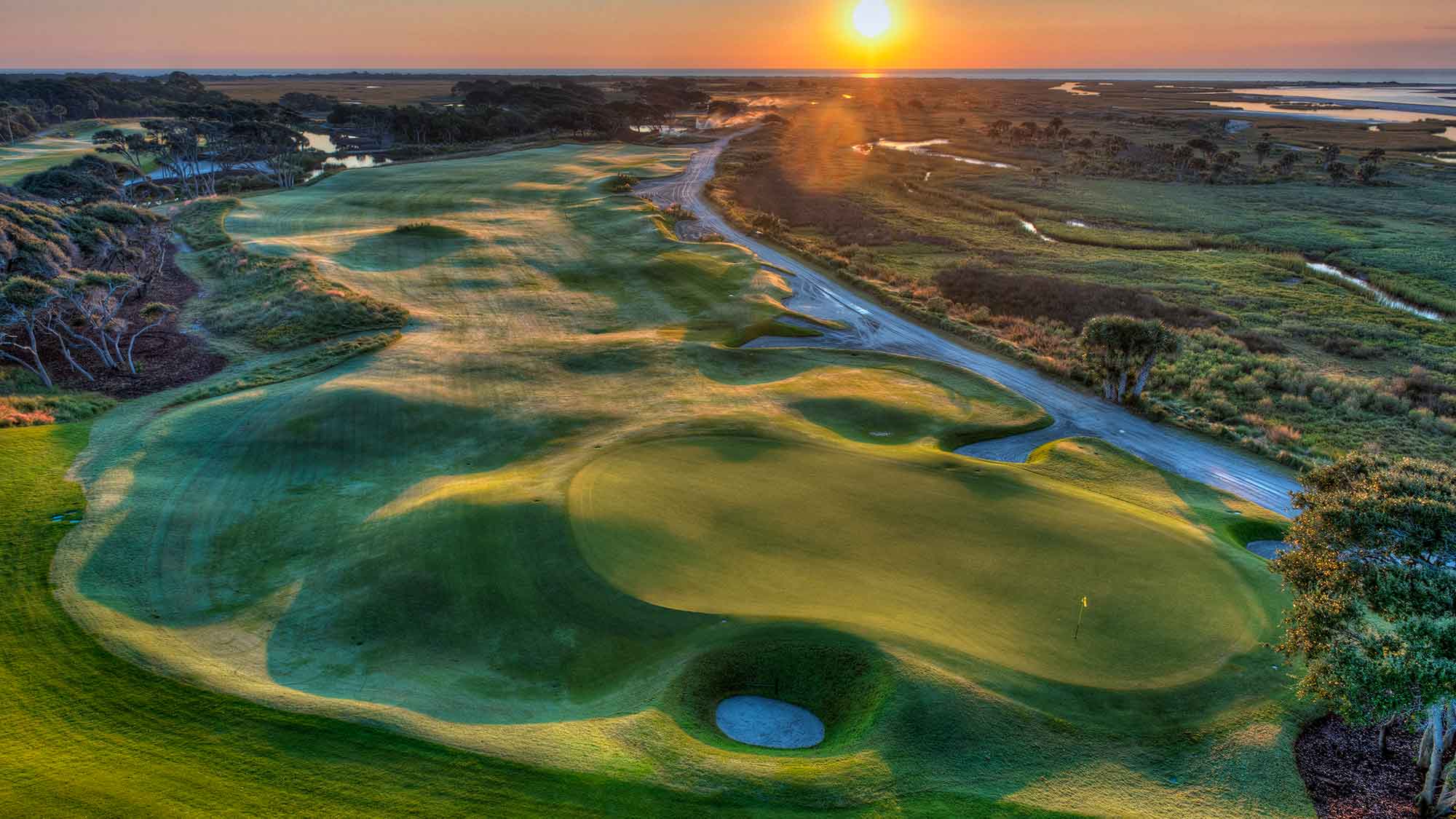
Uneven lies present a different sort of problem at the par-4 ninth, a formidable beast with the left side of the fairway edge rolling down into a waste area that runs the length of the hole along another marsh. For professionals, par is a matter of finding the fairway and then controlling trajectory in the wind, but reaching the green in two might not be realistic for most others. High-handicappers have a tendency to try it anyway by slashing wild hybrids and metal woods that usually end up in troublesome places, including deep bunkers, the waste area and a series of deathly hollows left and right of the green.
In the decades after the Ryder Cup, Dye returned repeatedly to expand turf areas, particularly around the greens so that missed shots would settle on grass rather than in dune vegetation (yes, the course has been softened). But swales such as these produce uncomfortable situations for bogey golfers who must hit recovery shots from tight and uneven lies up to greens they often cannot see. How they handle these touchy situations throughout a round might cumulatively have the single greatest impact on their scores, especially if they are taking two or three chips per hole.
“Mentally you can begin to say to yourself, I have no chance of getting this up and down,” Gerard says. “What most people do is say, I’m going to go ahead and try to pull it off anyway, and that’s when it really goes sideways.” Bogey can be an achievable score at tough holes like the ninth if second shots are played to a relatively flat area short of the putting surface that leaves a straightforward pitch. That requires a degree of self-awareness and course management not common in less accomplished players.

The par-4 10th and par-5 11th, two holes that run straight out between thick, native-covered dunes on the left and a canal on the right, demonstrate how architects intimidate via deception. Deep waste areas that guard the right side of each hole appear larger than they are and prompt bailouts to the left. But approaches from the left of the 10th must cover another waste bunker short of the green from a direction that crosses the shallow axis of the putting surface. Second shots from the left side of 11 have to be played blindly over a grassy dune straight ahead or back towards a second nexus of trouble on the right in the form of crater bunkers and the canal. The pro players who take on the 250- to 270-metre carries over the waste bunkers can go on attack working with the angles of the greens, but resort players who are bold or lucky enough to skim the edges of the pits rather than the fat of the fairway will also net better rewards.
“These tee shots are the most challenging for the regular player,” says Jeff Stone, course superintendent at the Ocean Course since 2003. “When you stand on those tees, you look out and think, It’s just so tight. But once you get there you see how much fairway there is. Dye’s ability to visually intimidate you off the tee is the course’s biggest challenge – he’s got you before you’ve even hit the shot.”
The tee shot at the par-4 13th is the rare occasion Dye doesn’t try to disguise the landing area.
Most people wish he did – drives play from the opposite side of the canal and showcase a long, uncomfortable view of the water running tight down the right side of the fairway and against the green. On the opposite side of the landing zone await dunes and five elevated crater bunkers. There’s no room to miss, and approaches that shy away from the water result in delicate chips or bunker blasts back towards the canal. This is one hole where the PGA Championship participants, hitting from tees pegged at 454 metres (497 yards), will be just as anxious as resort players.
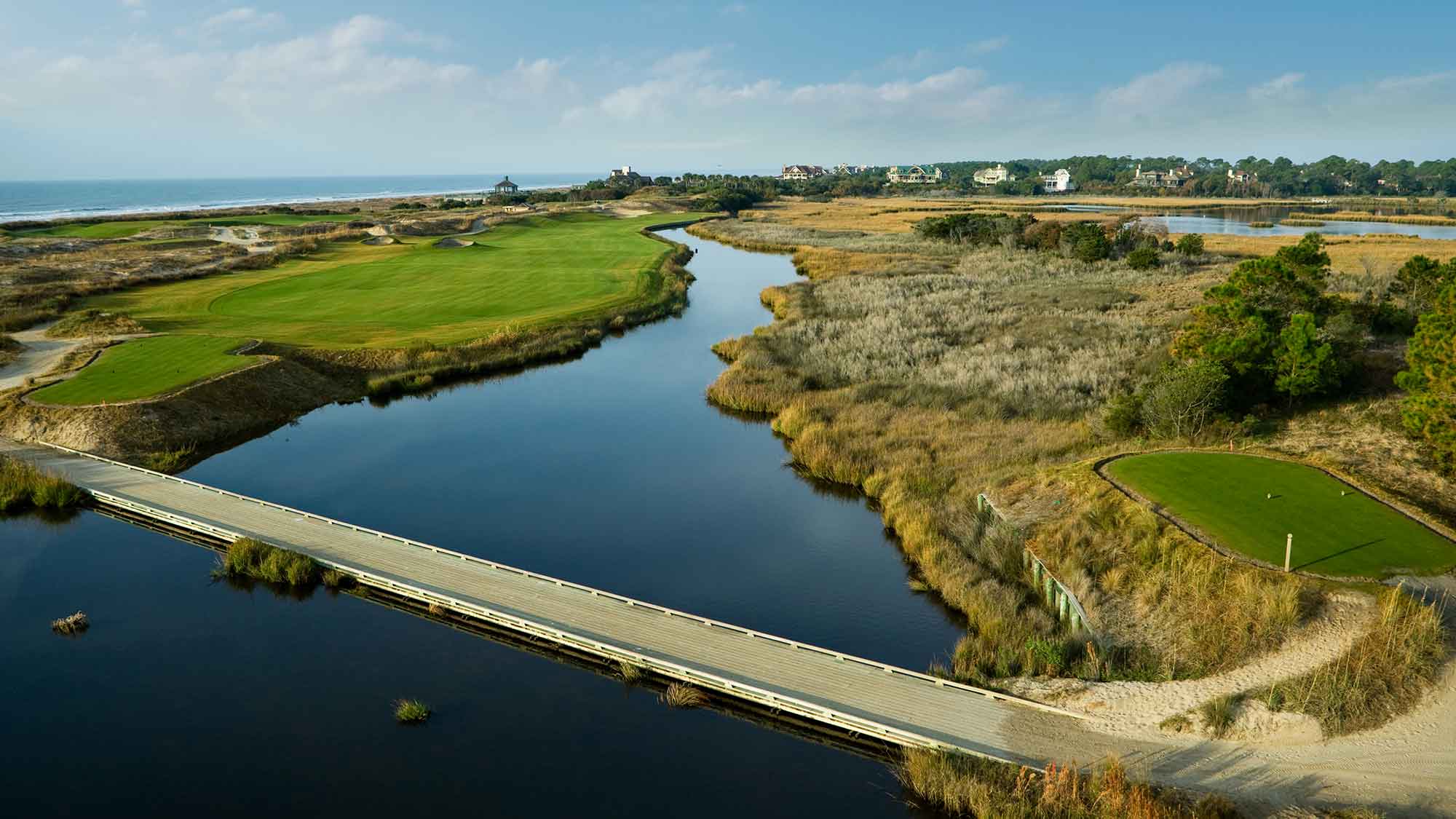
Whether it’s a particular pot bunker at Pine Valley, a creek at Augusta or the Church Pews bunker at Oakmont, great courses have signature hazards that tease the psyche as much as test strategy. At the Ocean Course it’s the cavernous Sahara bunker protecting the second-shot landing area of the par-5 16th. Spanning 60 metres, it runs up against the front left of the green and sits two to three metres below the surface with mounds of wiry grasses planted within it, hazards within hazards. A good rule is that if a staircase is required to enter and exit a bunker, give it a wide berth. Even if an extra stroke is needed to circumnavigate the hazard, it’s worthwhile because being inside is an almost certain two- to three-shot penalty for higher-handicap players.
After having encountered wind, sand, marshes, lost balls and other forms of humiliation, players come to the infamous 17th hole, a par 3 across a lake with no room to miss short. Strangely, the merciless little interruption on the long march back to the clubhouse is actually a bracing tonic for shell-shocked stupors. How can it not be? Oddly but magnetically out of place, it is an absurd theatre where so many before have fallen, including Ryder Cup and PGA Championship legends. Playing from elevated tees with the wind whipping, the prudent tactic would be to aim for the patch of fairway short and left of the green and then attempt to scramble for 3 or 4 and save face. But against everything that’s come to pass, against this last chance to speak on the record and assert that you were here to play golf and to overcome, there’s one last piece of advice: take the shot.
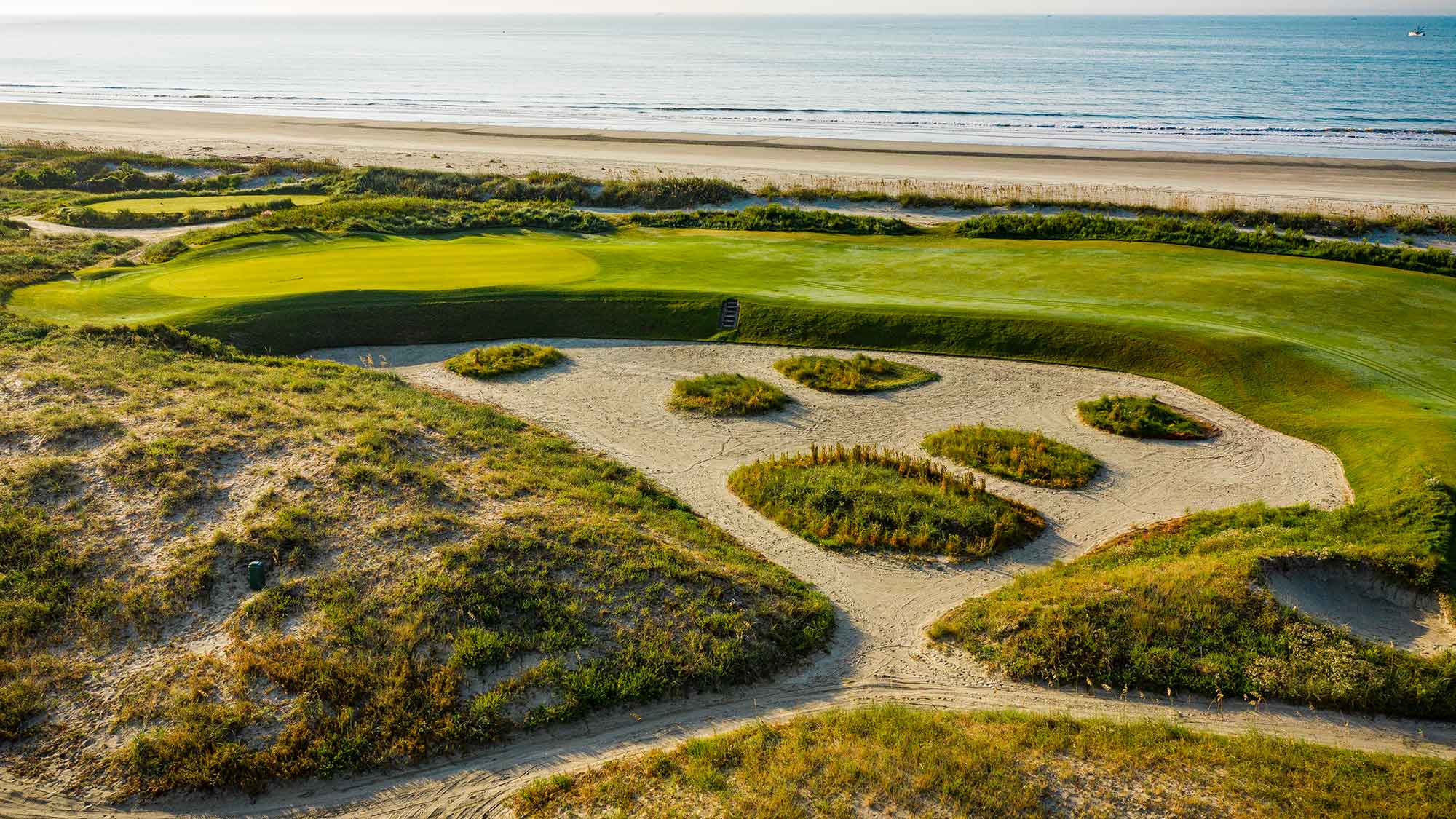
How to survive the ocean course
Instruction advice provided by Abby Welch, a teacher at the Kiawah Island Resort, with Matthew Rudy.
2ND, Par 5
‘Swing through it’ to clear a hazard
This hole requires a shot over a marsh off the tee and another by the green, but you can make these tasks less intimidating by rembering one thing: swing through it. The thought will help you launch a drive higher and farther. Just remember to tee the ball slightly higher than the top of your clubhead. Swinging through it also applies to approach shots, provided you shift your weight onto your front foot first.
3RD, Par 4 account
For rollout on a tabletop green
First, try to get the shortest club possible in your hands for an approach into an elevated green. Anything longer than an 8-iron and you’ll have to make adjustments to hit it higher. Also, always play the shot to the front of the green, even if the pin is back. Take advantage of the whole putting surface to stop the ball, or else you might be playing your next shot from a collection area well below the hole.
9TH, Par 4
Play for the flat spots
It’s never a bad idea to play for the centre of the green, like on the ninth, where a miss going for the flagstick could put you in a brutal position to get up and down. But it’s also smart to play towards the part of the green where a miss doesn’t cost you more than a stroke. If that means playing for the front right to ensure you’ll have a chip from a flat lie should you not reach the green in regulation, so be it.
11TH, Par 5
Roll it when in doubt
The elevated green on this par 5 often means playing your third or fourth from a collection area just below the putting surface. What’s the right play? If short wedge shots make you uneasy, grab your putter or hybrid and play this shot like a big lag putt. Don’t jab at it or flick up on it. Slightly favour your front foot and make a long fluid stroke, holding the clubface square with your putting line after impact.
13TH, Par 4
Check your ego on the tee
Some holes just don’t suit your game. This one, with water all the way up the right side, is a nightmare for right-handers who curve their tee shots in that direction. There’s no shame in grabbing a shorter but straighter club and playing a tough par 4 like this in three shots to the green. But if you still feel like gambling, the more you fire your hips through in the downswing, the less your ball should curve.
16TH, Par 5
Adjust your sand play in waste areas
Waste-area sand is common at the Ocean Course, and this par 5 has plenty of it. The mistake is treating it like a shot from the softer sand around the greens or in a traditional fairway bunker. This stuff is usually damp and firm and a tough lie for average players. Unless you are really good at picking it clean off tight lies with longer clubs, take a wedge with minimal bounce and play for a flat spot in the fairway.

